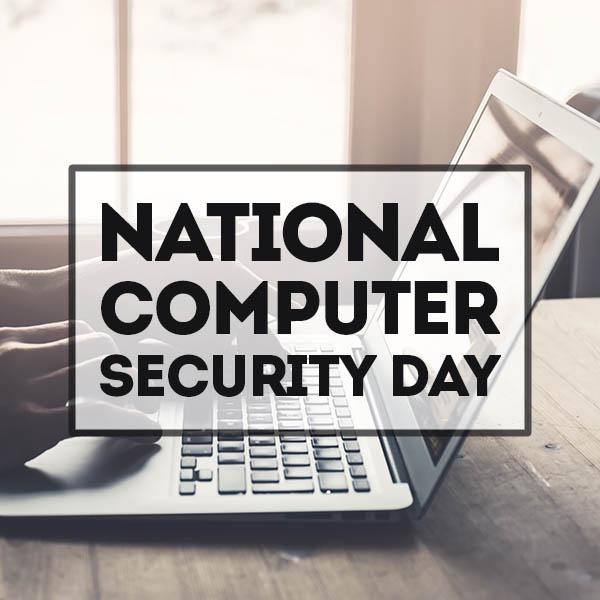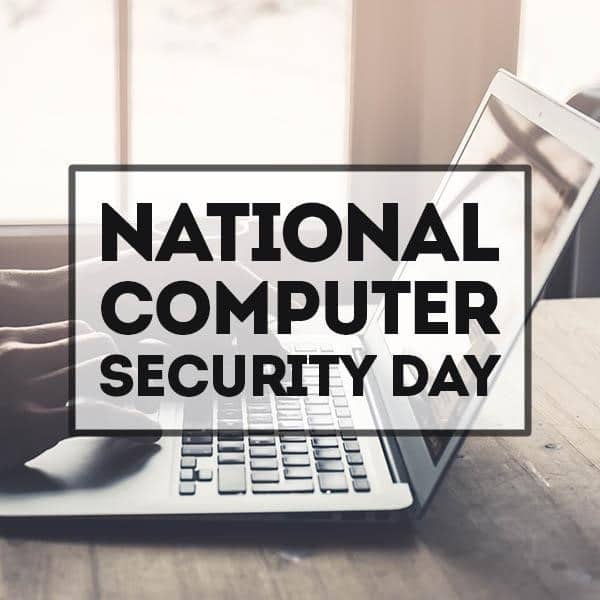
National Computer Security Day falls on November 30th each year. An observance that was first started in 1988, Computer Security Day serves as a reminder to organizations and users around the world that their devices contain no shortage of valuable information, and therefore need to be protected. As such, we’ll go over a few best practices that will help you to lock down your devices, preserving your business and personal data.
Why Your Computers Need to Be Secured
Simply put, they’re too important not to be. Think about how much of your day-to-day is maintained via computer or mobile device, whether personally or professionally. How much of this data could be abused if it were to fall into the wrong hands?
The fact of the matter is that this need for security was seen four years before the first glimpses of a smartphone’s capabilities were seen in the IBM Simon Personal Communicator. Even then, computers had become relatively common, which meant that there was plenty of data up for grabs already.
Impact and Importance
Now, some thirty-one years later, the importance of computer security has only been proven further. Data breaches have become some of the biggest threats to businesses and their continuity, the average data breach costing a U.S. business $7.35 million, each breached record costing the business $225.
This is, of course, before calculating the impact of other factors, like lost clientele and the damage done to a business’ reputation.
Clearly, if you aren’t sure that your workstations and other devices are as secure as they should be, you need to remedy that. In the spirit of Computer Security Day, we’ve assembled a few key practices that will help you to do so.
How to Secure Your Computing Devices
 There are quite a few ways to make sure that you aren’t leaving your devices vulnerable to threats.
There are quite a few ways to make sure that you aren’t leaving your devices vulnerable to threats.
Password Practices
Do you know why you’ll always find something referring to passwords in advice like this? They work pretty well, as long as they’re handled correctly. As passwords are a major part of your cybersecurity, you need to make sure that yours meet a few standards:
- Don’t reuse your passwords. Each online account you have should be secured by a unique password – that way, if one of your accounts is breached, the attacker can’t easily get into your other ones as well.
- Make sure your passwords are strong enough. While it may be easy to use some personal detail as your password, it’s just as easy for a hacker to piece that kind of thing together. Make sure that your passwords are sufficiently complex, utilizing case-sensitivity, length requirements, and various alphanumeric characters and symbols.
- Keep your passwords secret. Yes, that one may seem obvious, but you’d be amazed how many people will secure something with a password, only to write it on a sticky note and attach it to the secured device. If remembering your passwords is an issue, you might consider leveraging a password management tool.
Maintenance
There are plenty of activities that you can incorporate into your internal procedures that will help to make your computer more secure. For example:
- Update your solutions. The software solutions you use may be a resource, but they can also be a means for an attack to sneak in through an unresolved vulnerability. Updating your software and applying patches will help to reduce your risk through these means.
- Inventory your devices. An unaccounted-for device can very quickly create a serious issue. By keeping an up-to-date inventory, you can better keep track of where these devices are.cyb
- Keep a backup. Sometimes, your security may just not be enough. These circumstances make it necessary for businesses to keep a backup that meets all applicable best practices; redundant, off-site, and up-to-date.
Education
Finally, we have to address one of the biggest risks to any organization: its users. Fortunately, there are ways to help cut back on the security risks that your employees are generating.
- Update security policy documentation. Your business should have its security policies spelled out and accessible to your employees. If it has been a while since it has been refreshed, give it a once-over. Remember, this document should dictate the conduct of your employees as they use their solutions.
- Hold security trainings. A written resource is one thing, and a practical session is another. Not only will this help impress the importance of security to your employees, you can identify areas of confusion among your staff and focus further efforts to resolving this confusion.
- Encourage security awareness. There are various threats to a business’ data security, whether an employee has their device in the office or out and about. Reminding your employees of the potential issues that mishandling their equipment can lead to should assist your computer security.
Final Thoughts
This is just the tip of the computer security iceberg. There are far more considerations to make and solutions to implement to truly protect your assets and we’ve covered them with Tolar Systems’ Complete Security. Contact us today for a security consultation.
